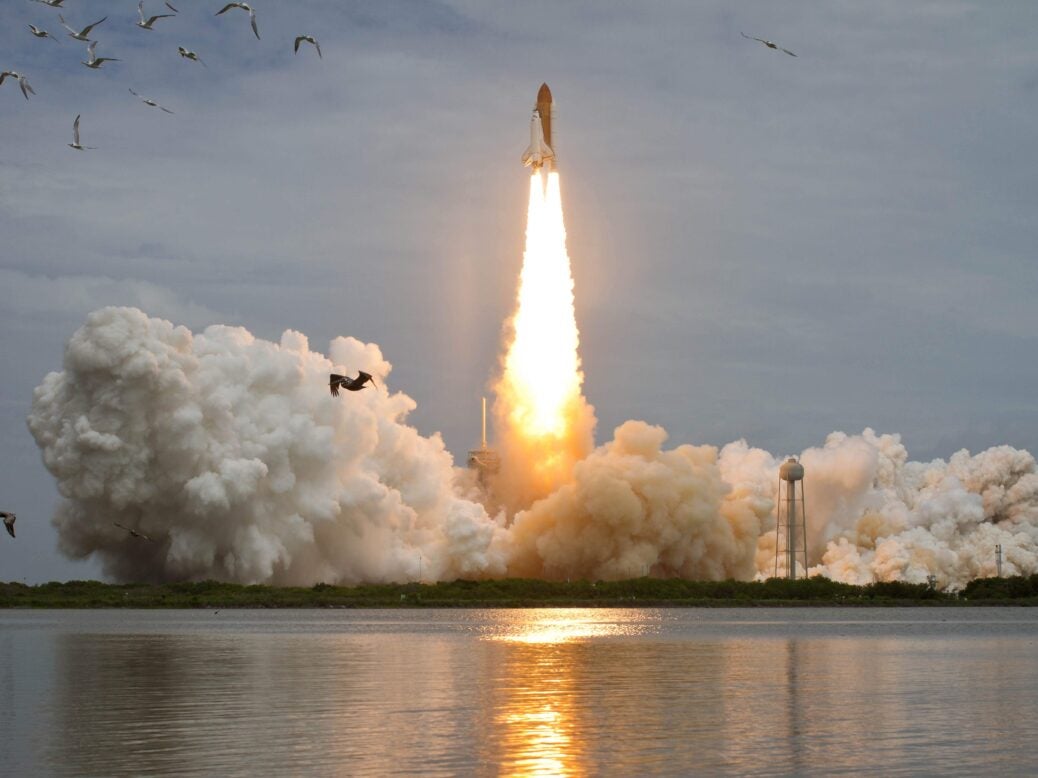
With the biggest commercial space companies still resolutely private, how can investors with stars in their eyes get involved? John Underwood suits up to find out.
This weekend marked a small but significant step in mankind’s hundred-year quest to master the complexities of spaceflight. SpaceX, the commercial aerospace company founded by tech entrepreneur Elon Musk, launched its eighth mission under contract to NASA (which has not operated a space shuttle programme since 2011).
The mission has so far been successful; the rocket (unlike its immediate predecessor) survived launch, and the Dragon spacecraft made it safely to the International Space Station. These are achievements in themselves, but what makes Friday’s launch notable is that for the first time ever, part of the rocket was safely recovered for reuse.
A huge barrier to the commercial viability of space travel is that so many of its component parts are essentially disposable. The Russian RD-180 rockets that power American Atlas V spacecraft cost $10 million each, and continuing tensions between the old superpowers have more than once threatened their supply. If SpaceX can master reusing its rockets, then its planned trajectory – Musk is aiming for a manned spaceflight for next year and a Mars mission in a decade – will suddenly seem a lot more realistic.
Alas, SpaceX remains a private company, funded by its NASA contract as well as its high-performing sibling Tesla Motors (and, one imagines, a reasonable chunk of Musk’s own $13- billion fortune). Its most high-profile competitor, Jeff Bezos’ Blue Origin LLC, has also resisted going public. So what investment opportunities are open for those who want to be in on the ground floor of commercial spacetech?
Despite lacking futuristic entrepreneur CEOs, two of the most promising stocks to chase belong to companies with a century or more in the business. The Boeing Co, which turns 100 this summer, is applying its considerable experience to both the key challenges of sustainable spaceflight, sharing a NASA contract to deliver manned missions with SpaceX and working on a replacement for the RD-180 with Blue Origin.
The third partner in the latter project is Lockheed Martin, a company with ancestors responsible for everything from the Titan rocket to the Blackbird stealth bomber. Currently working on a revolutionary tracking system for use in space, Lockheed Martin’s stock has almost tripled in value in five years. Another promising potential investment is Orbital ATK, which holds the contract to develop solid rocket boosters for the Space Launch System, NASA’s proposed replacement for the Space Shuttle. Orbital ATK’s slightly wider range of interests could be reassuring for some investors; the fact that this range largely encompasses weaponry will doubtless dissuade others.
Although these companies are especially high-profile, there’s no shortage of space-focused investment opportunities. Honeywell International’s aerospace division is so well-established that in 1966, the company provided Stanley Kubrick with engineers to help develop plausible space technologies for the film ‘2001: A Space Odyssey’. Airbus was the first major aerospace player to address the long-awaited field of space tourism with its conceptual spaceplane. And for those with a taste for the truly futuristic, Aerojet Rocketdyne Holdings (formerly GenCorp) has recently 3D-printed a functional rocket engine.
As with any emerging market, the commercial space sector will offer plenty of risks (and a few spectacular explosions). But a small step into space investment could lead to giant leaps of profit down the line.






